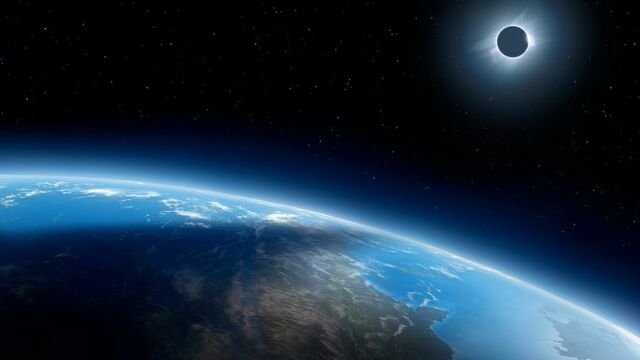The Moon is moving away from the Earth and it could have consequences, according to scientists

While the Moon appears to orbit the Earth in a perfectly predictable cycle, it turns out that it has been slowly moving away from us for several years.
Is the Moon leaving us? If so, it's doing it at a very steady pace. Thanks to a small device installed during the Appolo missions, we are able to calculate the precise distance between the Earth and its natural satellite. And according to the measurements, the Moon is slowly but surely moving away from us every year.
Discover our latest podcast
3.8 centimetres per year
On 21 July 1969, the astronauts of the Appolo 11 mission arrived on the Moon, taking a small step for man, but a big one for mankind. But there was nothing touristy about this mission! On the spot, the scientists carried out various tasks, collecting rock and lunar soil, examining the surface and installing a lunar reflector.
More under this adMore under this adDid you know the Moon is slowly moving away from Earth? Find out more #Moon facts in our #infographic series #ForwardToTheMoonhttps://t.co/mGHgLvqBZapic.twitter.com/sQRcAgsEaG
— ESA (@esa) January 19, 2019
This is in fact a quartz glass mirror, and five of these devices were installed during the Appolo 11, 14 and 15 missions. Their purpose? To enable the distance between the Earth and the Moon to be calculated precisely by means of a laser sent from the blue planet. Thanks to these reflectors, we know that the Moon is moving away from us by 3.8 centimetres per year (more precisely 3.78 centimetres). Doesn't sound like much right? But this distance has been happening for several billion years.
More under this adMore under this adThe tides are to blame
So what is the reason for this? According to the Cité de l'Espace in Toulouse, this slow separation is caused by the dynamics of the tides. In an article published on its website:
Due to its gravitational pull, the Moon attracts the seas and oceans towards it, causing the tides (the Sun also plays a role) (...) This deformation of our planet along the Earth-Moon axis results in friction and therefore in the dissipation of energy in the form of heat, which has consequences on the orbital balances of the two bodies (in physics, nothing is lost or created, everything is transformed).More under this adMore under this ad
Evidence set in stone
More recently, a study has looked at this distance and its effects. But the team in charge of this study did not need to go to the Moon. They were able to carry out their analyses directly on Earth, by observing its ancient sedimentary layers. Published in PNAS, the results of their work are not easy to digest for a layman in science, but it is important to understand that the distance between the Earth and the Moon can have consequences on the climate, and thus alter the colours of the sediments.
So the scientists went to Karijini National Park in Australia, where there are rocks that are 2.5 billion years old. And indeed, Australian rocks did show some alterations. The explanation is given in an article in The Conversation:
Periodic changes in the shape of the Earth's orbit and the orientation of its axis influence the distribution of sunlight received by the Earth over periods of several years.More under this adMore under this ad
Rest assured, however, that while this distance is real, it is virtually inconsequential for us. Although, in 600 million years, our natural satellite should be so far away that it will no longer be able to eclipse the Sun. Anyway, that gives us plenty of time to find a solution to this problem.
This article was translated from Gentside FR.
Sources used:
- PNAS: Milankovitch cycles in banded iron formations constrain the Earth–Moon system 2.46 billion years ago
-Cité de l'espace de Toulouse: CHAQUE ANNÉE, LA LUNE S’ÉLOIGNE DE LA TERRE DE 3,8 cm !
-The Conversation: Our moon has been slowly drifting away from Earth over the past 2.5 billion years
Read more:
⋙ Saturn’s moon might be inhabitable, what does this mean for humans?
⋙ Saturn left with a tilt after its own moon crashed into it
⋙ Newly invented 'flying saucer' to help explore the Moon, according to scientists